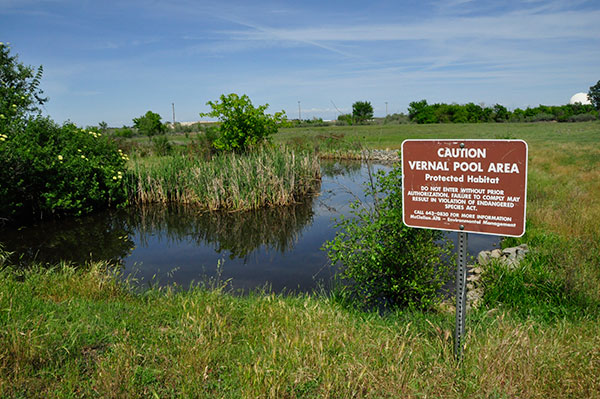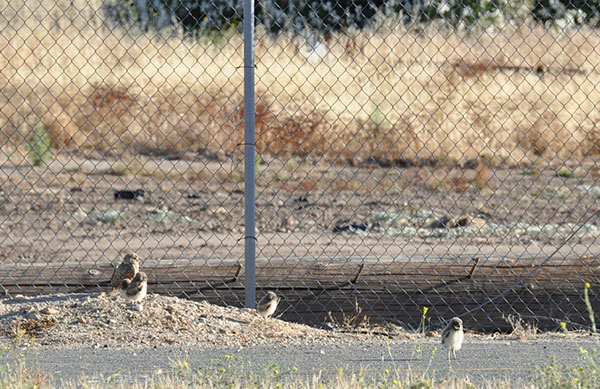Protecting and Conserving - Even after closure, Air Force officials continue to watch over McClellan's wide variety of natural resources
 |
|
|
|
Photos |
 |
|
 |
|
 |
|
Since McClellan closed in 2001, the Air Force has overseen the ongoing environmental cleanup taking place at the former base, and also worked to protect natural resources at the site, keeping a watchful eye on the land, water, soil, plants and animals that reside there. |
|
Download HiRes |
 |
|
Burrowing owls are considered a species of concern by the Department of Fish and Wildlife and are protected. |
|
Download HiRes |
 |
|
Even though they are not on the Endangered Species List, AFCEC still made sure nearby environmental cleanup activities would not impact them. |
|
Download HiRes |
|
|
|
|
In the spring of 2013, in the midst of a bustling environmental cleanup project at the former McClellan Air Force Base, a family of burrowing owls carved out a serene existence on a small protected piece of land.
Seemingly oblivious to the construction site just feet away, the pair of owls established a nest and hatched four active owlets thanks in large part to efforts made by the Air Force Civil Engineer Center (AFCEC).
Burrowing owls are considered a species of concern by the Department of Fish and Wildlife and are protected. Even though they are not on the Endangered Species List, AFCEC still made sure nearby environmental cleanup activities would not impact them.
To do this, the Air Force constructed a detour to minimize disturbance and prevent trucks from driving too close to the nest.
"The owls were very adapted to the existing levels of disturbance in the area," said Molly Enloe, AFCEC natural resources project manager. "And with the protected area that the Air Force has made sure the owls have, they are doing very well."
Since McClellan closed in 2001, the Air Force has overseen the ongoing environmental cleanup taking place at the former base, and also worked to protect natural resources at the site, keeping a watchful eye on the land, water, soil, plants and animals that reside there.
In 2013, the Air Force and U.S. Environmental Protection Agency signed the McClellan Ecological Sites Record of Decision (ROD). This document provided a path for the cleanup of seven sites where sensitive habitats, including creeks and vernal pools, were impacted from prior Air Force operations. The cleanup involved removing more than 11,000 cubic yards of soil and sediment from the area, while protecting and restoring sensitive habitats at the former base.
Following the completion of the cleanup, restoration work included seeding and planting wetland plants, weed management and monitoring.
"We made it a priority to restore the habitats to their original state," said Steve Mayer, AFCEC environmental coordinator at McClellan. "The Eco-Sites project is a great example of the Air Force's commitment to cleanup the environment and to protect natural resources."
The grassland, vernal pools and waterways that make up the former base are home to a variety of plants and wildlife, including the river otter, western meadowlark, green heron, deer mouse, red-tailed hawk, and the federally-threatened vernal pool fairy shrimp. Two other threatened species, the giant garter snake and valley elderberry longhorn beetle, have potential habitat there.
At first glance, a vernal pool may not look all that different from any other stretch of landscape. However, a closer look reveals a much more complex environment, home to intricate ecosystems featuring a variety of plants and animals. Vernal pools are distinguished from other seasonal wetlands by the unique and rare plants and animals that not only survive but actually thrive in these harsh conditions.
"Many of the plants and animals in vernal pools can't live anywhere else" said Enloe. "They actually need the extremes of soggy winters and scorching dry summers. They hide out during the dry season as seeds, eggs, or cysts, and then grow and reproduce when the ponds are filled again."
Even with trucks and heavy machinery rumbling close by, thanks to the efforts of the Air Force and its contractors, life goes on uninterrupted for McClellan's complex network of natural resources.